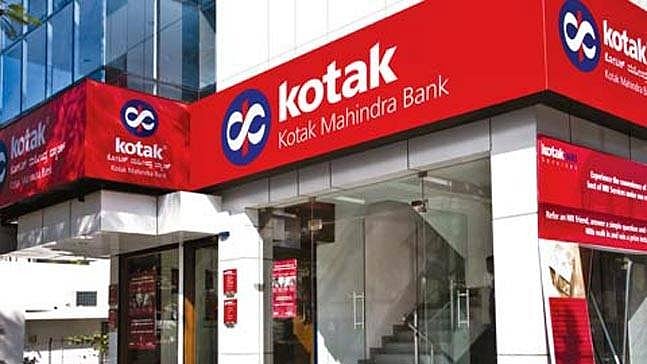The Indus Entrepreneurs (TiE) is a global network of 13,000 entrepreneurs across 18 countries.
To further its mission of fostering entrepreneurship through mentoring, incubation and funding promising start-ups, it organises discussions on a regular basis. One such discussion was recently held in Mumbai with a forward looking theme. Pankaj Joshi gives the key takeaway of the session.
Keeping the customer at the centre
While this was a technology-heavy discussion, one theme was reiterated time and again that is not to sacrifice the consumer for technology. Rather, it is important to keep them at the centre. Technology could be a great aid for a sector like healthcare, where there are multiple issues. Starting with lack of infrastructure (dispensaries onwards to hospitals), to non-availability of trained manpower at all levels, to the quality of governance and performance and then to affordability. First three issues can easily be dealt with technology.
In healthcare, it was agreed that the model would be more of a B2B2C (business to business to consumer) where the middle B would stand for a decision influencer, for example a doctor. Amit Mookim, MD (South Asia), IMS Health pointed out that in the technology space anywhere in the world, it was customer acquisition that was the most expensive of all the activities. Normally it would be funded by investors, but since the past 6-8 months the flow of funds from investors have declined drastically. He averred that most of these young, app-driven businesses right now are better off with the B2B model. It would be better if they piggyback on the marketing machines of large organisations in the healthcare industry which are strongly connected to the individual customers.

Mahesh Murthy, Founder, Seedfund Defence and space industries would be of interest for investors. This would provide opportunities related to the offset clause of equipment buying and Make in India.
Sudarshan Jain, MD of Abbott Healthcare stated that technology would change the relationship of the patient and the doctor. This can happen with change in awareness and diagnostics. The combination of technology and medicine, like a healthcare-at-home concept, would greatly increase the effectiveness of current assets and manpower operating in healthcare. For example, a 24-hour check on blood pressure could help find out what has actually occurred to the patient. The growing trend of non-interventional diagnosis is well-supported by technology innovations.
The rate at which lifestyle diseases are growing is much more than the rate at which hospitals and doctors are produced. So there is a need for a lifestyle watch and change at the consumer end is the only alternative. Here again technology can be a great enabler through apps. Information is available and implementation of discipline at the individual end is necessary.
Apps now give a more panoramic view and it can be used by individuals for predictive and preventive purposes. This aspect opened up a conflict of interest – companies which profit from diseases and companies which would profit from preventing diseases. Vishal Gondal, founder, GoQii, emphasised that he would prefer dealing with customers who are looking at staying healthy, with apps that are focussed on fitness and preventing diseases from occurring.
Then there is the issue of trust, for which data must be standardised and tools must be robust. With that, the individual can make informed decisions about managing his or her lifestyle. Saurabh Arora, CEO, Lybrate also underlined the trust aspect. His view was that a neutral platform with ease of use would induce participation. Also, there was a requirement of a feedback mechanism in the technology loop. Technology is capable of engaging the customer at many levels, getting data on age, lifestyle and other parameters, and thereby coming up with better analysis. The user, at the end of the interaction, should be able to gain some knowledge beyond the pill or the procedure.
 (Left to Right) TiE Mumbai’s Sanjay Mehta; The Express Group’s Anant Goenka; The Three Sisters Institutional Office’s Radha Kapoor; CNBC’s Nisha Poddar; Adino Telecom’s Ayesha Manshukhani; Raay Global Investments’ Amit Patni and Hexware Technologies’ Atul Nishar, after the panel ‘Family Offices – the new wave of investments’." src="https://www.freepressjournal.in/assets/img/FJP-default-16x9.png" />
(Left to Right) TiE Mumbai’s Sanjay Mehta; The Express Group’s Anant Goenka; The Three Sisters Institutional Office’s Radha Kapoor; CNBC’s Nisha Poddar; Adino Telecom’s Ayesha Manshukhani; Raay Global Investments’ Amit Patni and Hexware Technologies’ Atul Nishar, after the panel ‘Family Offices – the new wave of investments’." src="https://www.freepressjournal.in/assets/img/FJP-default-16x9.png" />(Left to Right) TiE Mumbai’s Sanjay Mehta; The Express Group’s Anant Goenka; The Three Sisters Institutional Office’s Radha Kapoor; CNBC’s Nisha Poddar; Adino Telecom’s Ayesha Manshukhani; Raay Global Investments’ Amit Patni and Hexware Technologies’ Atul Nishar, after the panel ‘Family Offices – the new wave of investments’. |
Rashid Khan of Rxmedikart Technology provided the other side of the coin – technology in the process of cure of the disease. He also emphasised that internet and data availability would help patients in the core under-serviced area of counselling on how to take medication and why it is vital for the process timelines be observed. Today, in the process of cure, the patient gets directives from the medical professional, whereas with use of technology it will be more of a dialogue about options.
Manish Gupta, CEO, Indegene, gave the relevance of the multi-channel (largely popular in retail sector) approach in healthcare. In the past decade, this sector has seen many massive changes, from the off-patent phenomenon, to stricter monitoring ($20 billion fines were collected in the USA alone) and consolidation. The regulatory requirements meant that practitioners needed a data trail for audit and likewise technology was an aid for medical representatives in situations where they did not have physical access.

Amit Mookim, MD (South Asia), IMS Health At many level, technology has been accepted by the consumer. But the way forward is the capacity to generate an acceptable digital prescription which would scale up the healthcare sector.
In summation, the discussion was about technology showing results in a cost-effective manner. The patient (or the consumer) had to be at the centre of all planning – be it prevention, cure cost, cure access or informed decisions. Apps were seen as a good value-for-money monetisation technique.
Need for Angel investment
The role of angel investors and the value provided by them were also discussed, during the discussion. For starters, the importance of institutionalised venture/angel funding was put in perspective. Miten Mehta, co-founder, Spinta Global Accelerator, pointed out that India today has 13 million SMEs and less than 5 per cent of those have been funded by venture capital (VC). Clearly, reliance on VC has not been part of the Indian ecosystem. In Israel there is a VC industry, which is ten times that of India’s VC sector, even though there is sufficient demand for VC funding here.
If you take a closer look at VC investments, it is obvious that most of them don’t come from traditional industry-centric institutional selection models. A bottom-up research approach is more the way, for that reason, it would
not make sense for our VC investors to blindly apply the USA model. Instead, Indian VC funds must evolve their own model because structured funds will always be needed.
Ajay Kumar Kapur, Deputy MD, SIDBI Many SIDBI funds had seen closures in fundraising in the past 12-15 months and the next 6-8 months, we would see some more. So, fund managers would go scouting for investments.
Mehta pointed that as it is venture capital model itself would disappear from the Indian market over the next few years. While the industry funds other businesses (on a 2 per cent annual fee and 20 per cent success fee model), it does not fund itself. In USA for instance, there is a fund-of-funds concept. Some evolution would be needed. For businesses, the SME-listing platform offered by equity exchanges over the past few years is another source for companies to access risk capital.
Ajay Kumar Kapur, Deputy MD, SIDBI said that crowdfunding as an option was scalable but regulatory structures needed to be in place. He gave the view that in start-up funding also there was a dynamic demand-supply scenario. Many SIDBI funds had seen fund-raising closures in the past 12-15 months and the next 6-8 months would see some more. Fund managers, therefore, would go scouting for investments.
The consensus was that, going forward, the ecosystem would be more transparent to the start-ups. Investees could be free to ask themselves what type of investment they need, what type of mentor they need, and would meet investors accordingly. Like it takes a village to raise a child, we can say that it takes a country to raise a start-up. The ecosystem will definitely get friendlier.
Digvijay Singh, VP of Indian Angel Network was of the view that one big challenge for angel investors was in scaling up, both in their business as well as their investee companies. He said that HR practices are a big lacuna, right from manpower planning, internal growth mapping to ESOPs.

Miten Mehta, Co-founder, Spinta Global Accelerator India has 13 million SMEs and less than 5 per cent of those have been funded by vC. Clearly, reliance on VC has not been part of the Indian ecosystem. In Israel, VC industry is ten times that of India’s VC sector.
Mahesh Murthy, reputed investor and founder Seedfund indicated that a good area of interest for investors would be the defence and space industries. These would provide opportunities related to the offset clause of equipment buying (India is the second largest buyer of defence equipment in the world), then from Make in India. Lastly, there is a genuine desire by Indian investors to invest in locally-owned Indian companies, not like Paytm or Flipkart where majority of the shareholding is foreign.
Acceptability is not an issue
The utility of the service offering is not in question anywhere. MyCFO, as name suggests, provides support services
to the finance departments of companies. These could be tactical (compliance or regulatory-related) or strategic in
nature. Such services have value even in large companies, stated Vinod Keni, ED of this company, as the CFO’s office has many objectives which are taking back-seat in priority because the bandwidth is less. Again there are projects where external resources tend to be more helpful.
Apart from small to medium companies, the obvious growth would come from the non-metro locations. The government policy through Make in India and the encouragement provided to the MSME sector is also encouraging services like myCFO.

Vishal Gondal, Founder, GoQii there is AN issue of trust about health apps for which data must be standardised and tools must be robust. With that, the individual can make informed decisions about managing his or her lifestyle.
The acceptance for education is growing. Dron Study, based-out of Surat, has a monthly revenue size of close to Rs 2 crore. The company’s vision is to deliver affordable, high-quality study options with doorstep convenience. It offers self-learning online at a fraction of cost by faculty of same high-quality level. The content is a mix of own and aggregated content, and it includes curriculum for higher secondary and junior college students along with students training for IIT-JEE and medical entrance examinations. Professional courses covered are CA/ CS/ CMA and it also offers training for bank probationary officer exams.
In case of health care, technology at many levels has been accepted by the consumer. But the way forward is the capacity to generate an acceptable digital prescription, which would scale up the healthcare sector’s capability in a strong manner, stated Mookim.
Role of entrepreneur
In the case of a business model like myCFO, the predominant growth market would be the smaller towns and cities (beyond the top 6-8 cities of India), where industrial hubs have emerged. Here the challenge is that local manpower quality is not always of the desired level, and there is some resistance on the part of big-city employees to shift to small towns. In all this, investment in technology can mitigate some of the issues.
It was felt necessary for the entrepreneur to carve a distinct personality for the company. The entrepreneur has brought in an idea and the fact that he seeks funding means that idea is now set to go forward beyond him. Tushar Ajinkya, partner, DSK Legal, stated that the notion of the company being the entrepreneur and the entrepreneur being the company needs to be abandoned. If promoters want to attract money which is not their own and grow on that basis, then they must look at themselves as enablers, as trustees who have to deliver on promises and give returns on capital.
Saurabh Arora, CEO, Lybrate- A neutral platform with ease of use would induce participation. Also, there is a requirement of a feedback mechanism in the technology loop. Technology is capable of engaging with customers.
Mookim’s interesting take on technology and healthcare was that the doctors are highly active on social media. However, they are reluctant to accept technology as a monitoring force which increases their accountability in many ways. However, it is inevitable that technology use in healthcare will grow despite whatever reservations anyone may have.
Kapur stated that the Indian economy, consumers and investors need start-ups which can raise the performance bar. He believes that Israel with its list of start-ups is an inspirational example. Mehta gave the example of the former US President Obama who had once said that the innovation for the first $1 billion is from USA, and hopefully innovation for the next $5 billion would come from India and China. Failures may happen and will be acceptable, but it will be unacceptable, if you do not make an effort.
Murthy exuded optimism on Indian entrepreneurs in general. He opined that India truly is a different market, in the sense that we as a nation gets more done for less. Indian businesses generate a cost advantage without giving much away on product delivery. ISRO being a proud example. As an investor, he said that he would look at avoiding models which copy international giants. For instance, Indian businesses would now need to scale up in the technology space, in a different manner from what Indian IT has done so far.
Ajinkya opined on valuation that strong emphasis on compliance, transparency, governance would attract both business and funding. Non-transparency and non-compliance may perhaps not dilute the main business attraction, but during the time of investments, it might impact valuations.









